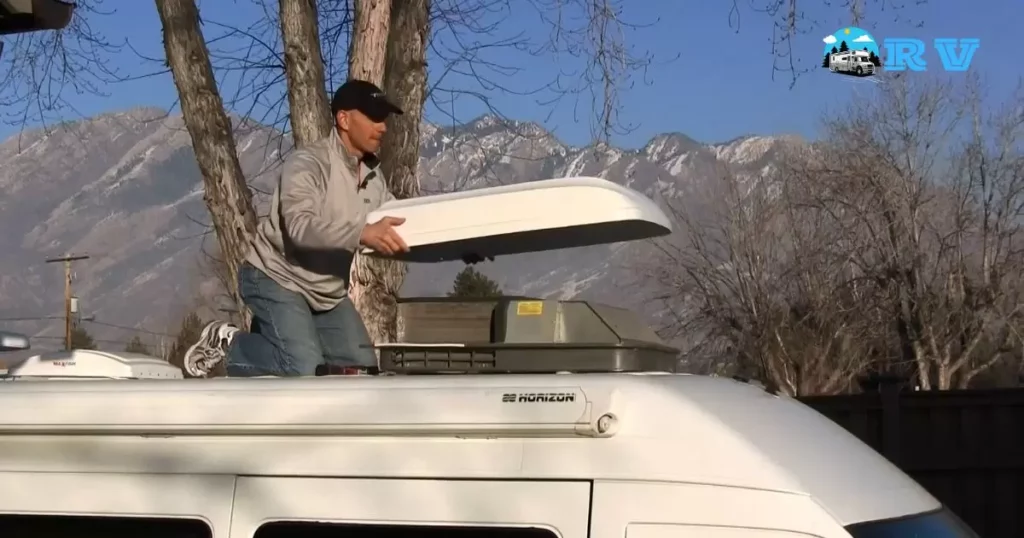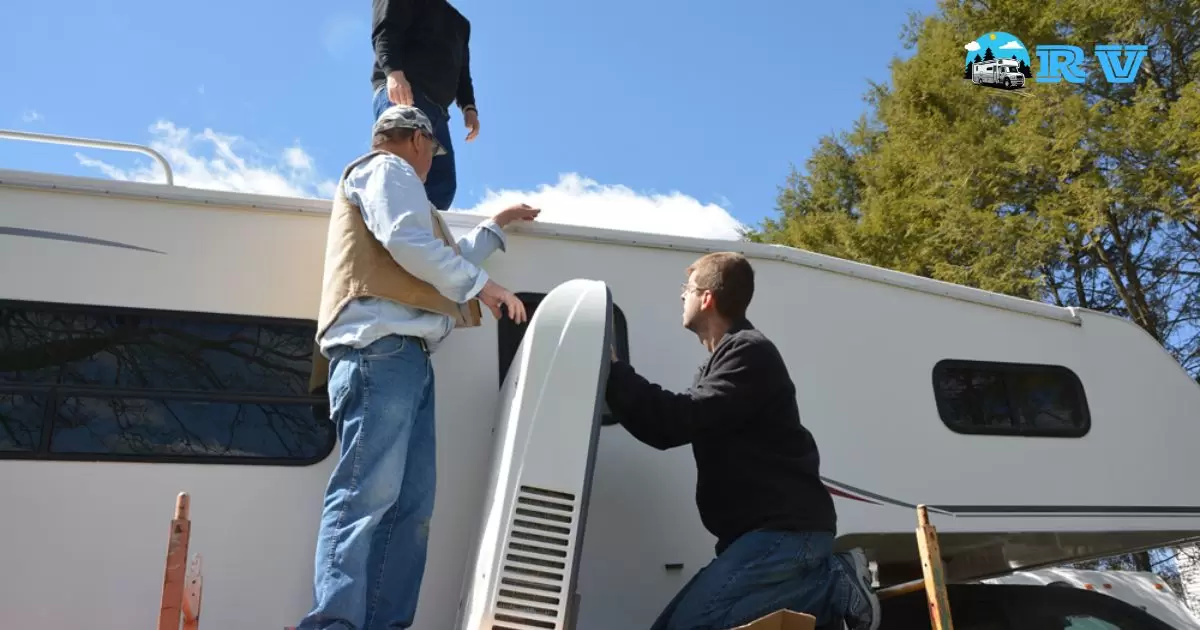An RV air conditioner is a compact cooling system designed for recreational vehicles (RVs). It keeps the inside of the RV cool and comfortable during hot weather. It usually mounts on the roof and uses electricity to cool the air. RV owners can adjust the temperature to their liking, making their travels more enjoyable in warm climates.
Are you ready to embark on your next RV adventure but wondering, “Can You Run RV Air Conditioner on 30 Amp?” The answer might just make or break your trip’s comfort. Join us as we unravel the secrets of RV air conditioning on a 30-amp electrical system. Discover practical tips, cost-effective solutions, and expert advice to keep your cool while cruising the open road.
Running your RV air conditioner on a 30-amp connection requires careful management of power resources. It’s possible with some adjustments and energy-saving strategies, such as using low-wattage appliances and ensuring your RV’s wiring and circuitry can handle the load.
Understanding RV Electrical Systems
Before diving into the specifics of running an RV air conditioner on a 30-amp power supply, it’s crucial to have a basic understanding of how RV electrical systems work. RVs can come with various electrical setups, but the two most common ones are 30-amp and 50-amp systems.
30-Amp Electrical System
A 30-amp RV electrical system consists of a single 30-amp service, which means it can deliver up to 30 amps of current at 120 volts. This is the most common setup for smaller and older RVs.
50-Amp Electrical System
On the other hand, a 50-amp RV electrical system provides two 50-amp services, which can deliver up to 100 amps of current at 120 volts. This higher amperage is typically required for larger and more modern RVs, especially those with multiple air conditioners and energy-intensive appliances.
RV Air Conditioners and Their Power Requirements

RV air conditioners, like any electrical appliance, have power requirements that need to be met for them to function optimally. The primary factors that determine the power consumption of an RV air conditioner are the cooling capacity (measured in BTUs) and the voltage it operates at.
Cooling Capacity
The cooling capacity of an RV air conditioner is typically measured in British Thermal Units (BTUs). RV air conditioners come in various sizes and capacities, with 13,500 BTU and 15,000 BTU units being the most common. The higher the BTU rating, the more cooling power the unit has.
Voltage
Most RV air conditioners operate on 120 volts AC power. This is standard for both 30-amp and 50-amp RV electrical systems.
Power Consumption
A 13,500 BTU RV air conditioner typically draws around 12-15 amps of current when running. A 15,000 BTU unit may require 15-18 amps. These numbers give us a rough idea of the power requirements, but it’s essential to note that air conditioners have a start-up current that is significantly higher than their running current.
Running an RV Air Conditioner on a 30-Amp System
Running an RV air conditioner on a 30-amp system is indeed possible, but it comes with some limitations and considerations. Here’s what you need to know:
Start-Up Surge
The most significant challenge when running an RV air conditioner on a 30-amp system is the start-up surge. As mentioned earlier, the start-up current can be around twice the running current. For a 13,500 BTU air conditioner, this means a surge of 24-30 amps, which can overload a 30-amp system.
Other Appliances
In an RV, you have various appliances and devices that require electrical power, such as lights, refrigerators, microwaves, and televisions. When your air conditioner’s start-up surge occurs, it can potentially trip the circuit breaker or overload your 30-amp system, especially if other appliances are running simultaneously.
Voltage Drop
Another issue to consider is voltage drop. When you run multiple appliances on a 30-amp system, the voltage can drop, affecting the performance and efficiency of your air conditioner. A lower voltage can lead to less cooling power and longer cooling times.
Management and Prioritization
To run your RV air conditioner on a 30 amp system successfully, you need to manage your electrical load carefully. This may involve turning off or unplugging other appliances while your air conditioner is running. It’s essential to prioritize your comfort while being mindful of your electrical limitations.
Solutions for Running an RV Air Conditioner on 30 Amps
While running an RV air conditioner on a 30-amp system can be challenging, there are several solutions and strategies to help you stay cool and comfortable during your travels.
Soft-Start Kits
One of the most effective solutions for dealing with the start-up surge of an RV air conditioner is the installation of a soft-start kit. A soft-start kit reduces the initial power surge, making it easier for the air conditioner to start without overloading the system. This is a significant improvement that allows you to run the air conditioner more reliably on a 30-amp system.
Energy Management Systems
Energy management systems are designed to distribute power intelligently to different RV appliances. These systems can prioritize the air conditioner when needed and reduce power to other appliances temporarily. This ensures that the air conditioner gets the necessary power without overloading the system.
Use an Autoformer
An autoformer, or voltage booster, can help mitigate the effects of voltage drop on a 30-amp system. It boosts the voltage to your RV, providing a stable power supply for your air conditioner. This can enhance the performance of your air conditioner and prevent issues related to low voltage.
Limiting Appliance Use
Another simple strategy is to be mindful of your power consumption. Turn off or unplug other appliances when the air conditioner is running. For example, if you’re not using the microwave or television, make sure they are turned off to free up more power for the air conditioner.
Additional Tips for Efficient Air Conditioning
To ensure your RV air conditioner runs as efficiently as possible on a 30-amp system, consider these additional tips, including how to reset an RV air conditioner when needed:
Maintain Your Air Conditioner
Regular maintenance of your RV air conditioner is crucial. Clean or replace filters, check for any obstructions in the air intake and exhaust, and ensure the unit is in good working condition. A well-maintained air conditioner operates more efficiently, reducing its power consumption.
Opt for a Single Air Conditioner Unit
If you have the option to choose between a single 15,000 BTU air conditioner or two 13,500 BTU units, the single 15,000 BTU unit may be a better choice for a 30-amp system. It provides sufficient cooling capacity with a lower start-up surge.
Park in the Shade
When parking your RV, try to find a shaded spot. This can significantly reduce the amount of heat that your RV has to combat, allowing your air conditioner to work more efficiently.
Use Reflective Window Coverings
Reflective window coverings can help block out the sun’s heat, reducing the workload on your air conditioner. They are especially useful in hot and sunny conditions.
Set the Thermostat Wisely
Optimize your thermostat settings. Don’t set the temperature too low; aim for a comfortable but not excessively cold temperature. This will reduce the air conditioner’s runtime and power consumption.
Stay Cool During Cooler Hours
Take advantage of cooler times of the day to cool your RV. In the early morning or late evening, you may not need the air conditioner at full blast, which can help you conserve power.
Key Considerations for Running an RV Air Conditioner on a 30-Amp System.
| Topic | Information |
| RV Air Conditioners and Their Power Requirements | RV air conditioners have power requirements based on cooling capacity (measured in BTUs) and voltage. Common cooling capacities include 13,500 BTU and 15,000 BTU. Most RV air conditioners operate on 120 volts AC power. Start-up current is significantly higher than running current. |
| Running an RV Air Conditioner on a 30-Amp System | Possible but with limitations and considerations. Start-up surge can overload a 30-amp system. Other appliances running simultaneously can trip the circuit breaker. Voltage drop may affect performance. Careful management and prioritization are required. |
| Solutions for Running an RV Air Conditioner on 30 Amps | Soft-Start Kits reduce start-up surge. Energy Management Systems prioritize power to the air conditioner. Use an Autoformer to boost voltage. Limit other appliance use when the air conditioner is running. |
| Additional Tips for Efficient Air Conditioning | Regular maintenance of the air conditioner. Consider a single 15,000 BTU unit for a 30-amp system. Park in the shade for reduced heat. Use reflective window coverings. Set the thermostat wisely. Use the air conditioner during cooler hours. |
FAQ’s
Can I run my RV air conditioner on a 30-amp hookup?
Yes, you can run a single RV air conditioner on a 30-amp electrical connection.
What if my RV has two air conditioners? Can I run both on 30 amps?
Running two RV air conditioners on a 30-amp hookup may overload the circuit. It’s typically recommended to have at least a 50-amp service for dual AC units.
Any tips for conserving power while using my RV air conditioner on 30 amps?
To conserve power, try running your AC along with minimal other appliances and use energy-efficient settings on the AC unit.
Conclusion
Running an RV air conditioner on a 30-amp electrical hookup is possible, but it comes with some limitations and considerations. For single air conditioner units, a 30-amp service is generally sufficient. When dealing with RVs equipped with two air conditioners, it’s essential to recognize that attempting to run both units simultaneously on a 30-amp connection can lead to circuit overloads and potentially damage your electrical system.
To make the most of a 30-amp service while running an RV air conditioner, it’s crucial to manage power consumption effectively. This can be achieved by using energy-efficient settings on the air conditioner and minimizing the simultaneous use of other power-hungry appliances. Understanding your RV’s electrical needs and capabilities is key to ensuring a comfortable and safe experience while using your air conditioner on a 30-amp connection.











